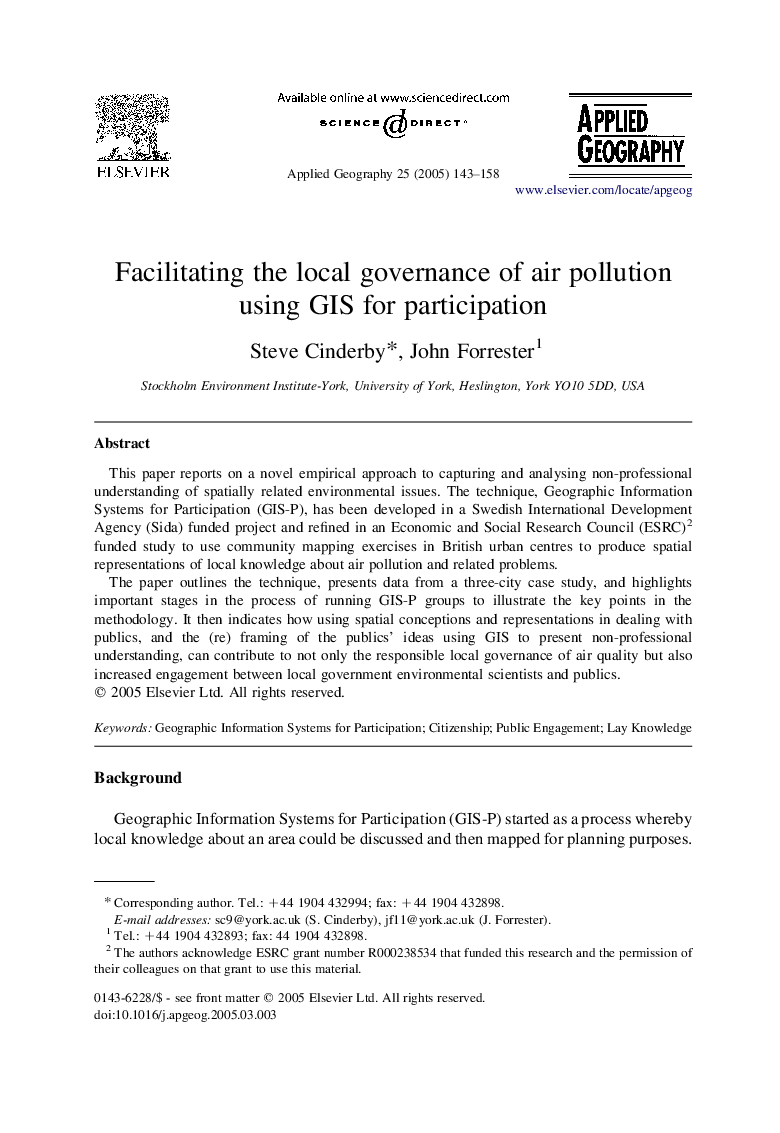| Article ID | Journal | Published Year | Pages | File Type |
|---|---|---|---|---|
| 10249871 | Applied Geography | 2005 | 16 Pages |
Abstract
The paper outlines the technique, presents data from a three-city case study, and highlights important stages in the process of running GIS-P groups to illustrate the key points in the methodology. It then indicates how using spatial conceptions and representations in dealing with publics, and the (re) framing of the publics' ideas using GIS to present non-professional understanding, can contribute to not only the responsible local governance of air quality but also increased engagement between local government environmental scientists and publics.
Related Topics
Life Sciences
Agricultural and Biological Sciences
Forestry
Authors
Steve Cinderby, John Forrester,
